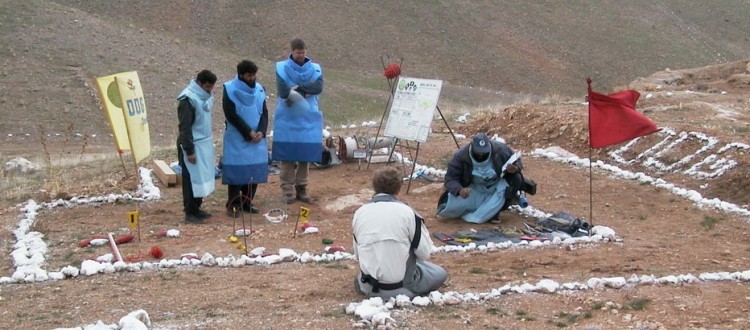A mine free world is possible
It is possible to fully implement the Anti-Personnel Mine Ban Convention, but it requires political will, commitment and sufficient resources, the Danish Demining Group (DDG) stated ahead of the High-level Panel on the Ottawa Convention held on March 2nd in Geneva.
| Suggested Reading | Conflict Background | GCCT |
By the Danish Demining Group
Ahead of the March 2nd Pledging Conference in Geneva, leading global personalities who can generate a debate on the most efficient way to achieve a mine-free world are attending a High-level Panel. The Danish Demining Group is represented as the only operator in the panel and the message is clear.
“Back in the 1990s people spoke about years and not decades, for a complete ban on anti-personnel mines. This was perhaps a bit over the top, but now we once again have the momentum, and we’re aiming at addressing State Party obligations under the Convention by 2025, before another decade goes by. We are reaching the last stretch and what is now needed is a credible commitment and enough resources to be channeled towards demining –-then we can make it happen,” says Tammy Hall, Head of the Danish Demining Group, who will be speaking at the panel – including, among others, former UN Secretary General, Mr. Kofi Annan, and the chair, Chile’s Minister of Foreign Affairs, Mr. Heraldo Muñoz.
The optimism is returning and the need for momentum is clear. But, the possibility is not enough.
“We also need political will, a commitment to using best practice to prevent wasting resources; and of course sufficient available resources dedicated to the 2025 goal. This is why events such as this pledging conference that reinvigorate the momentum are an important step,” says Tammy Hall.
The Danish Demining Group has extensive knowledge on demining from some of the most conflict affected and fragile environments around the world. It is this first-hand knowledge which makes the organization able to say that a mine-free world is possible, but not something that is easily reachable.
“If we for instance take the case of Afghanistan, which is one of the most mined countries in the world, it is possible to finish clearing the minefields that we know are there. The problem is that even though there are still some 524 square kilometers of minefields and 89 square kilometers of battlefield areas that need to be addressed, organizations like DDG have been forced to reduce their work force over the last three years due to reductions in funding. We have the political commitment, a trained work force and a scenario where areas cleared still have a considerable impact; but despite this, Afghanistan, and other major mine/ERW-affected countries may not be able to reach the 2025 deadline unless a more concerted effort is made for them to meet the target. With the right resources and commitment, meeting the deadline is possible, so let’s make it years, not decades,” says Tammy Hall.
Danish Demining Group (DDG) is the Humanitarian Mine Action Unit of the Danish Refugee Council (DRC). DDG operates in some of the most fragile and conflict-affected places in the world. DDG’s focus is on those countries most affected by landmines and other explosive remnants of war, as well as armed violence and the widespread proliferation of small arms and light weapons.
The Danish Demining Group is a member of the Global Coalition for Conflict Transformation.
The views expressed in this article do not necessarily reflect the views of TransConflict.




















RT @gcct_tc: A #mine free world is possible: It is possible to fully implement the Anti-Personnel Mine Ban… https://t.co/OuMG1vJL1W